Excellent customer service is imperative for any business. So let's look at how your website can alleviate some of the pressure from your customer service team.
The role of the business website in delivering exceptional customer service
The role of the business website in delivering exceptional customer service
Customer service engagement for businesses is becoming ever-more complex.
With over 60% of customers using more than one channel to contact customer services, it’s integral for any business to have an efficient method to deal promptly with incoming enquiries.
And the stats support this, with 90% of customers surmising that an “immediate” response is essential or very important when they have a customer service question (60% defining “immediate” as 10 minutes or less).
In this blog post, we identify the role that the website can play within an SME’s customer service strategy and how harnessing both human and technology-based services can contribute to improving efficiency in managing customers expectations.
Why is good customer service important?
Good customer service is the catalyst in turning a potential customer into a loyal customer.
And loyal customers can become advocates for your brand.
Whether this be through daily dialogue with free word-of-mouth advertising, product / service reviews or general brand engagement e.g. sharing or ‘liking’ content on social media etc.
On the flipside of that however, 80% of consumers say they would rather do business with a competitor after one bad experience with your company.
And in this digital age, your competitors are accessible at the click of the button.
So how can you optimise your website to provide excellent customer service?
There is so much in terms of functionality and technology that can be utilised as part of your businesses customer service offering.
And with 59% of customers believing that companies need to provide cutting-edge digital experiences to keep their business, it’s important to keep abreast of new technologies that compliment your offering and keep you ahead of the competition.
So, how can the website help your organisation to up your customer service game?
Put a face to a name with a Meet the Team page
A Meet the Team page humanises your company.
Afterall people do business with people.
For potential customers, knowing that genuine people are there and ready to address their concerns, builds trust and credibility.
But make sure that the look and feel of the page compliments your business’ personality.
Whether more formal headshots like Deoleo, quirky, yet sophisticated like Little Lambs Nursery or more animated like ours, it should reflect your organisation’s tone of voice.
It can also be as basic, or as involved as you’d like.
Whether you’re showing just an image, name, job title and contact details or including a full bio.
For us, we link off to our team’s respective LinkedIn profiles.
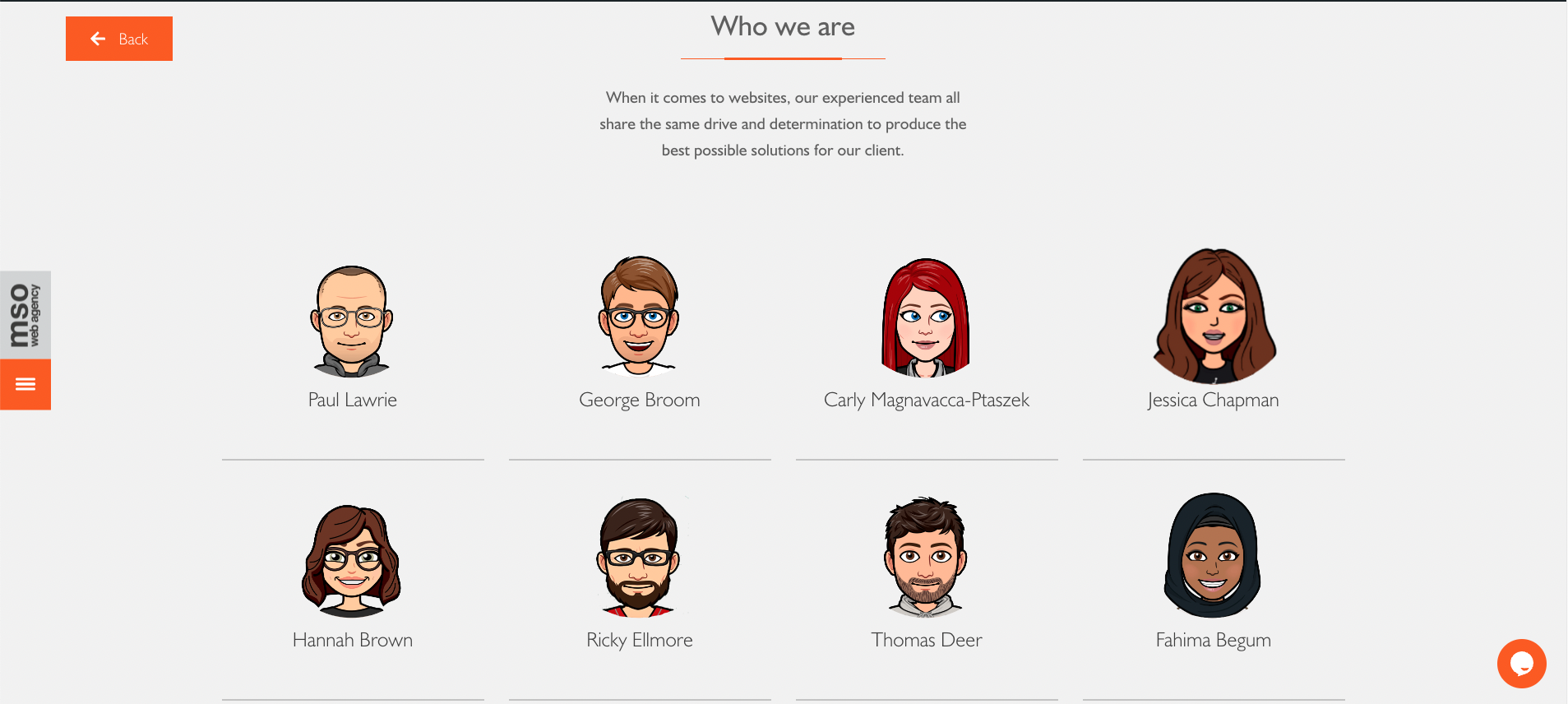
Clearly display your contact details
Sounds obvious right?
In a study by Komarketing, 64% of people stated that they want access to contact information to be readily available.
- This can be achieved in many ways, beyond its inclusion in your site’s primary navigation.
- Utilise a ‘sticky navigation’ so the navigation remains static on scroll. This allows users to access the navigation easily at any stage of scrolling. Much like Motorsport UK
- Have a quick contact button fixed to the page, as demonstrated on the Brigade Electronics website. Much like a sticky navigation, it allows optimum accessibility for users to get in touch.
- The website footer is where users ordinarily look for utility information such as T&Cs, Privacy Policies, Contact Information and Customer Support. So whether or not you have links to this information elsewhere on your website, add them to the footer too giving as much information as you are able for users to get in touch.
Sutton Valence School has a great example of how you can display contact information efficiently and effectively.
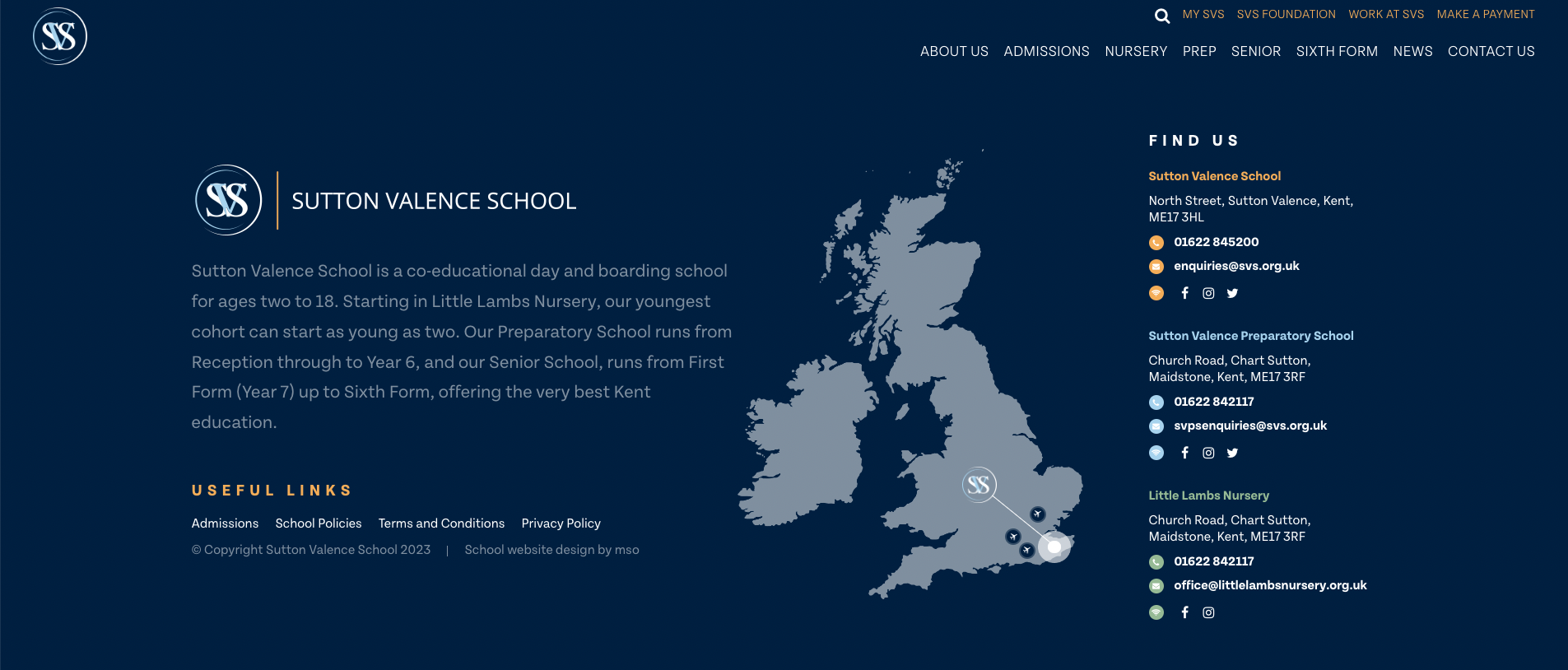
Make contact easy with an intuitive contact form
It’s a great ideal to implement a Contact Form to work collaboratively with your Contact Us signposting on your website.
Forms are generally more efficient for the user as they can be filled out there-and-then on the website – unlike an email, which directs users away from the website to their mail platform.
And short and sweet is the key here.
According to Hubspot, a study found that overall, more form fields yield lower conversions.
So aim to capture essential information only such as; name, contact details for the users preferred method of contact, nature of enquiry etc.
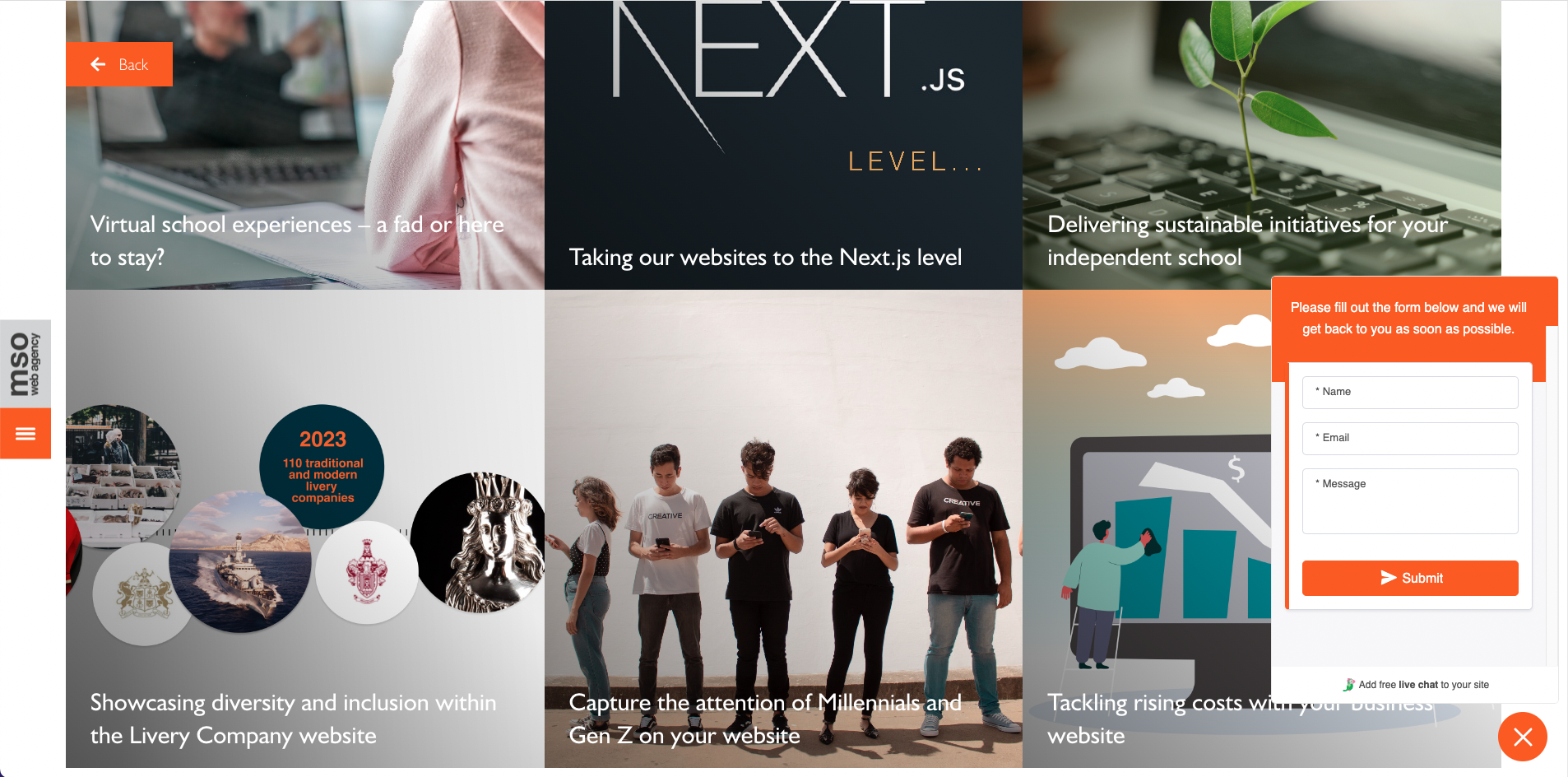
Save time for you and your users with an FAQ page
A comprehensive FAQ page on your website is a great resource for your users.
Additionally it can save your team hours of time responding to the same queries via email and phone.
A simple accordion style component on your website can give you the flexibility to add multiple FAQs that can be expanded and collapsed at the users discretion.
This takes up very little real-estate on the page, gives you a lot more visibility and will allow you to add as much information as is needed.
Whether text, images and video like Deoleo’s FAQs or including downloadable resources like manuals etc like Brigade.
For a really extensive FAQs page, including a search or filter function gives your users the ease to access the information they need quickly.
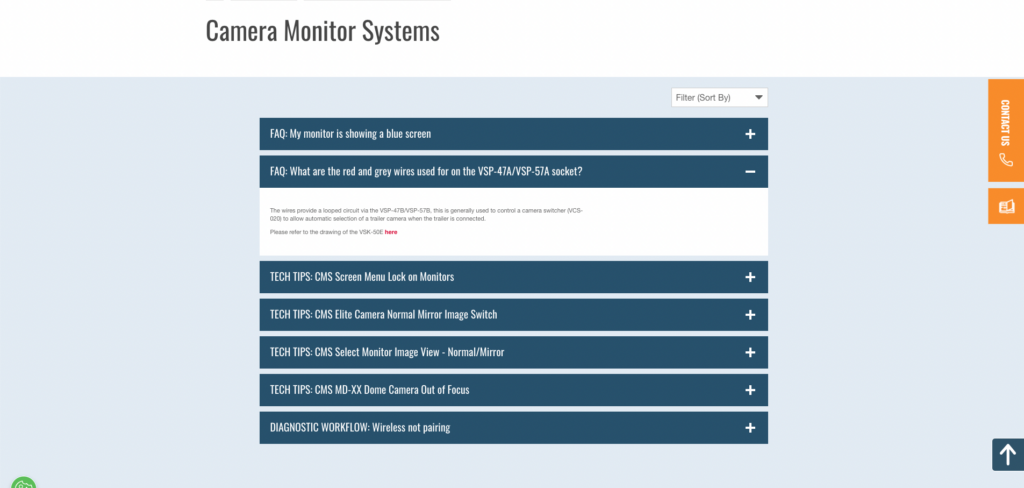
Give your users instant access to guidance with a live chat facility
You can reap the benefits of a live chat function on your website, without being overly intrusive to your users.
A static chat button and a simple prompt of ‘We’re Online! How may I help you today?’ as demonstrated on the Law Training Centre website, will target those users who are active on your website.
There’s also the option to have either automated or manned chatbots.
Automated chatbots can be programmed to reply with the same message everytime, or to respond to the users’ use of keywords to adapt their responses to fit the situation.
There are many third-party live chat tools available out there.
We use Zoho, Tawk and even Whatsapp on our WordPress websites.
Ultimately, the trick is to choose the tool that aligns with your business as each has varying functions.
From reskinning to fit in with your brand, customising the messaging, or setting ‘open’ and ‘close’ times for your live chat activity.
Show reviews, the good, the bad and the ugly
Customers are 63% more likely to trust brands with online reviews compared to brands with no reviews.
This is because they provide social proof of your product / service, build trust and validate your expertise.
But all reviews, whether good or bad, should always be displayed.
Sounds counterintuitive right?
Over half of consumers believe that a less than perfect review score is more authentic.
Being as transparent as possible helps consumers make informed decisions as people seek authenticity, not perfection.
Additionally, 82% of UK consumers have a positive view towards companies that respond to reviews and are generally happier to engage with these responsive companies.
So how can you show reviews on your website?
WordPress has a plethora of community review plugins available to use.
Alternatively, large review platforms such as Feefo, Google My Business and Yelp have WordPress integration plugins.
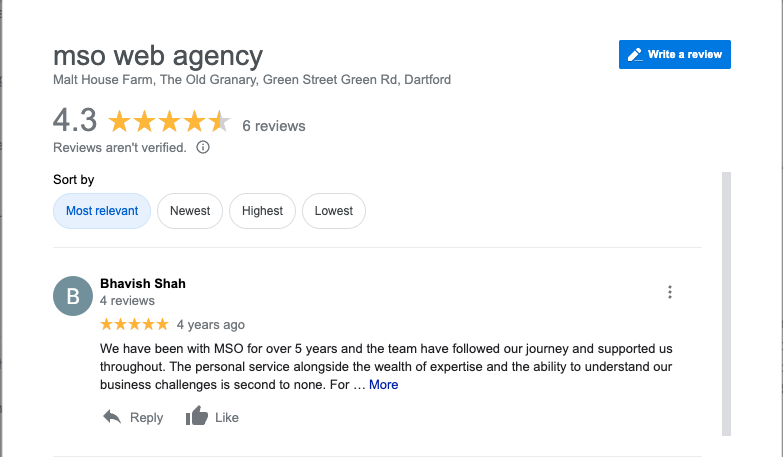
Our takeaways
Excellent customer service is imperative for any business.
Customers or potential customers who have a positive customer experience on your website, are more likely to return.
Returning customers, become loyal customers and in addition, advocates for your business.
Having scalable tools like those mentioned above should therefore be an integral part of your website and if used correctly can provide great benefit and improve efficiency in your customer service team.
But if you really want to understand what would help your customers, ask for feedback.
Feedback can help to shape the role your website plays as a customer service function and refine your existing methods.
As they say, the customer is always right.
